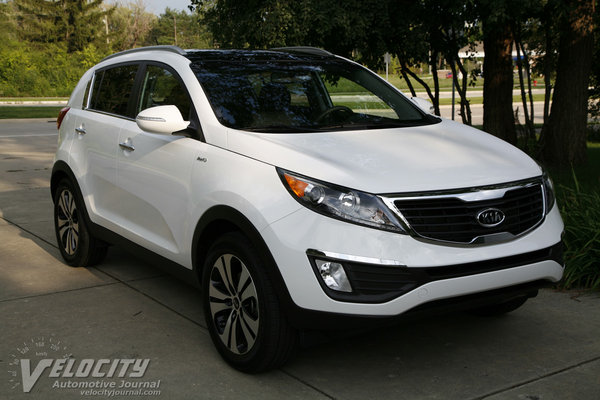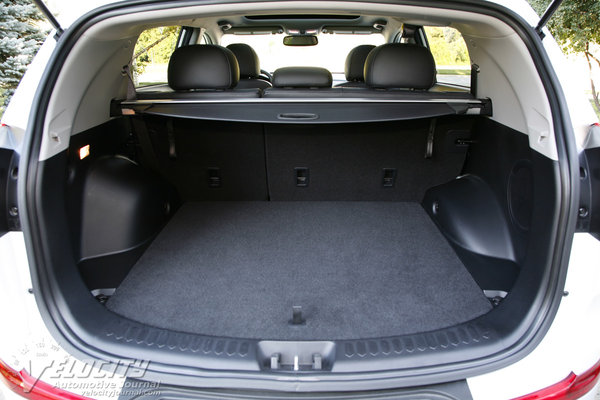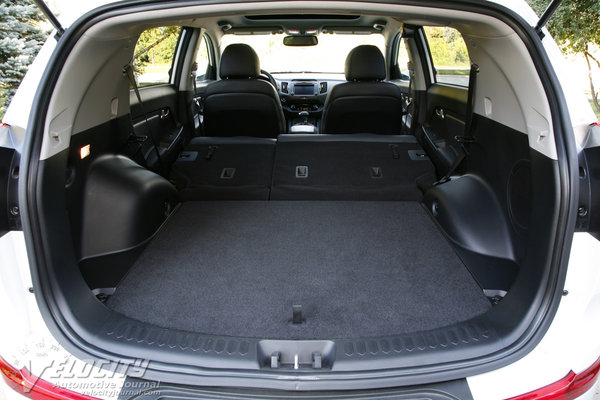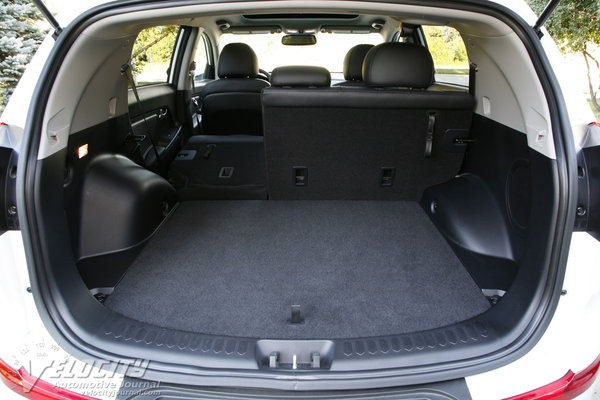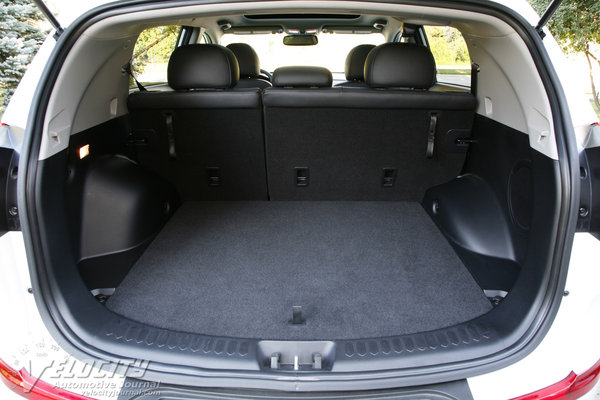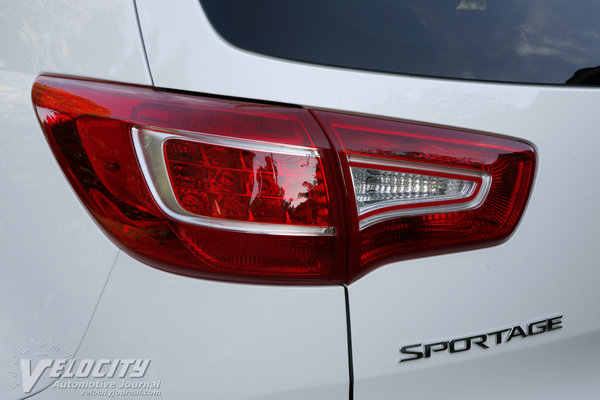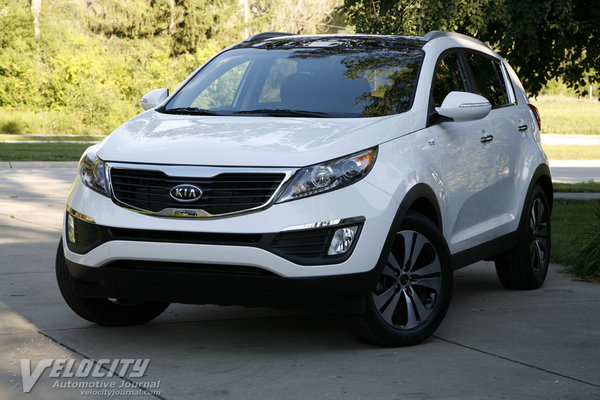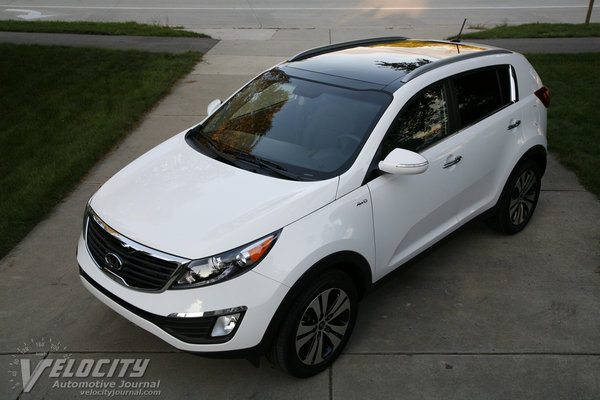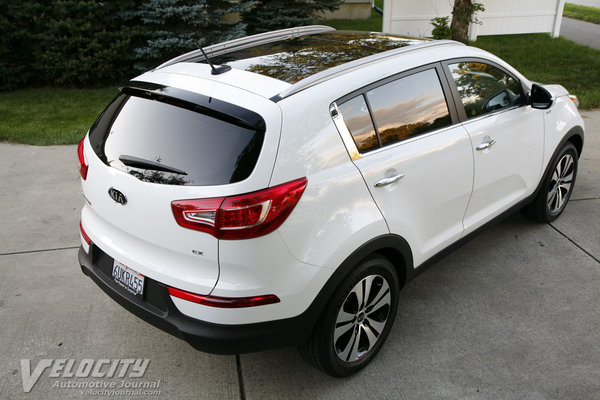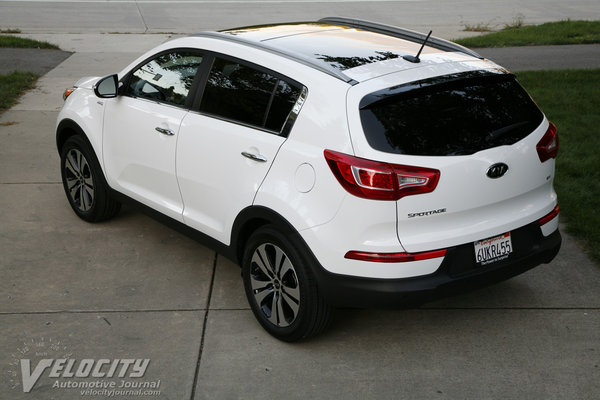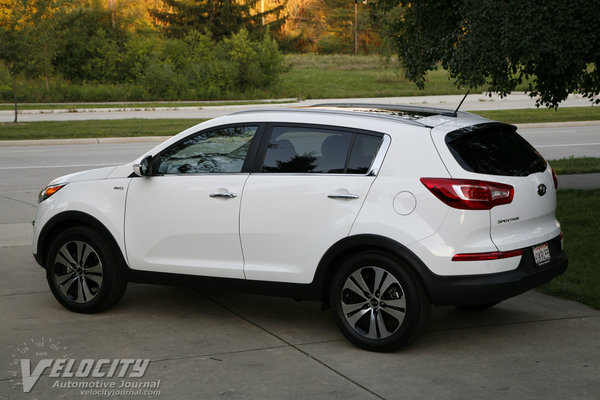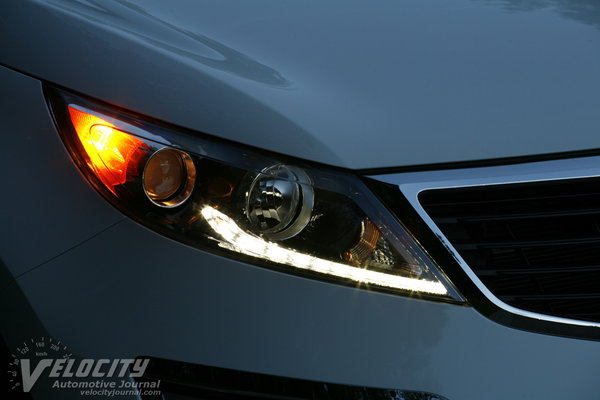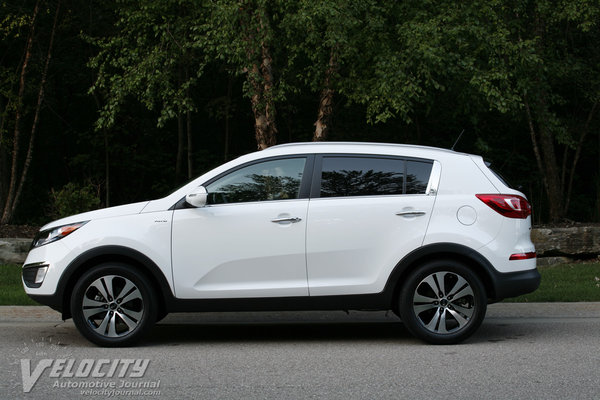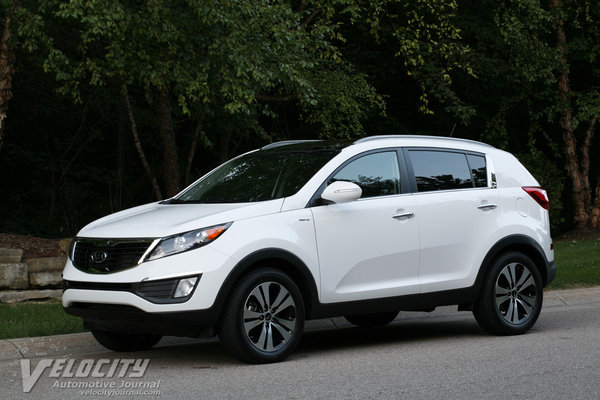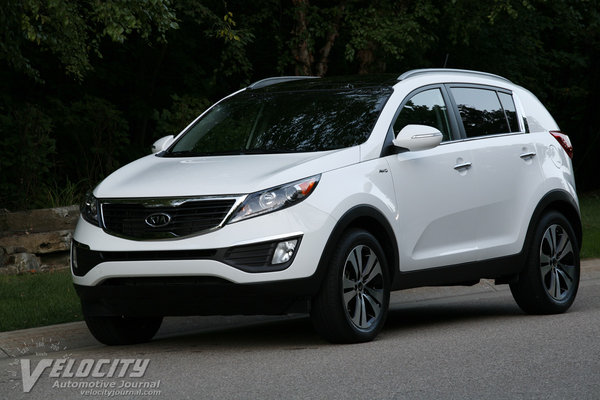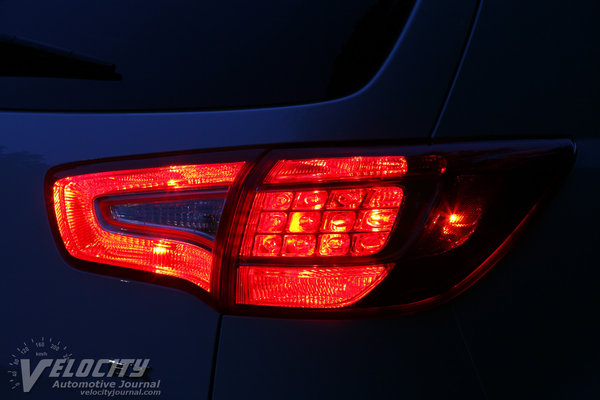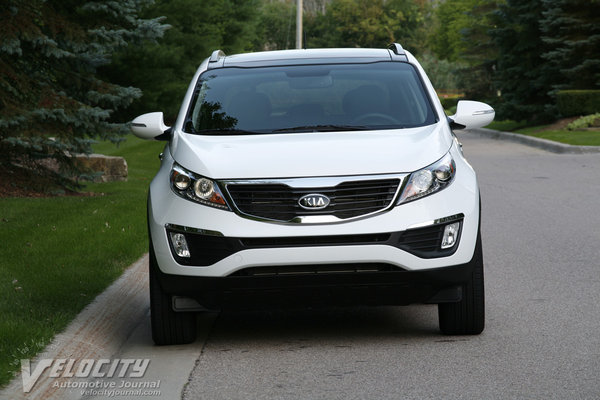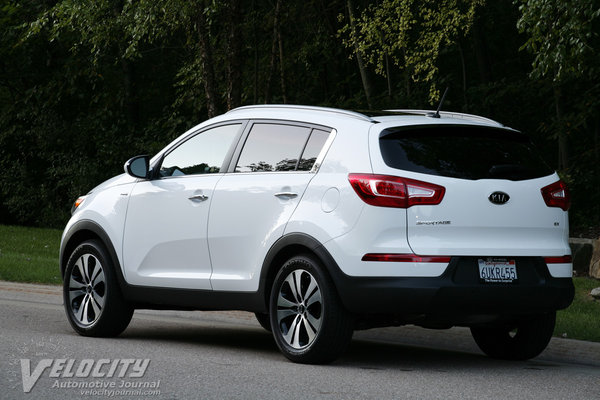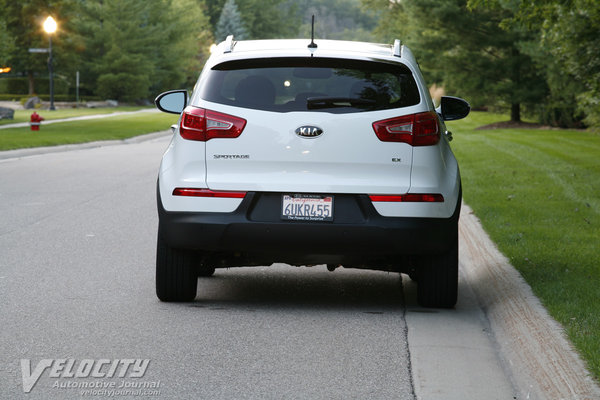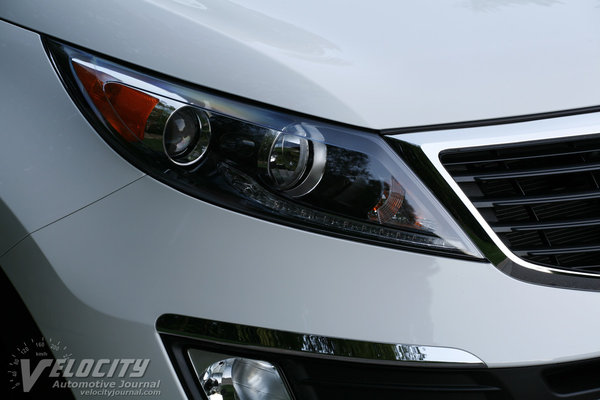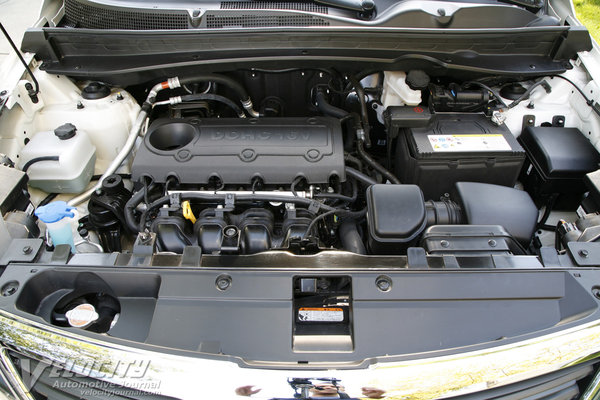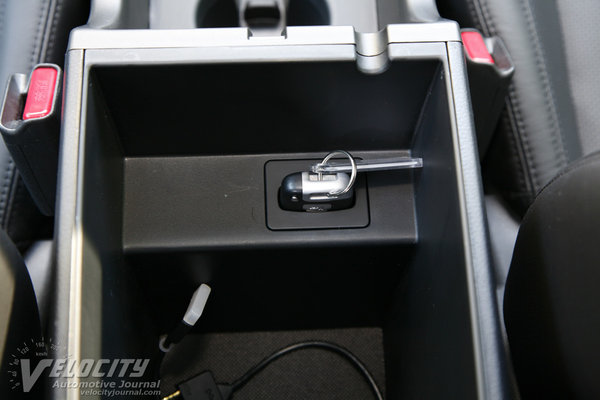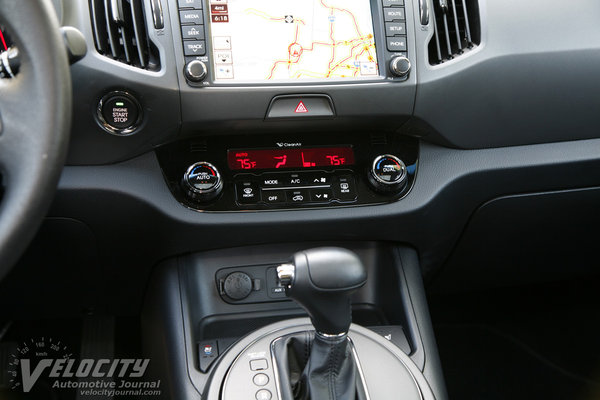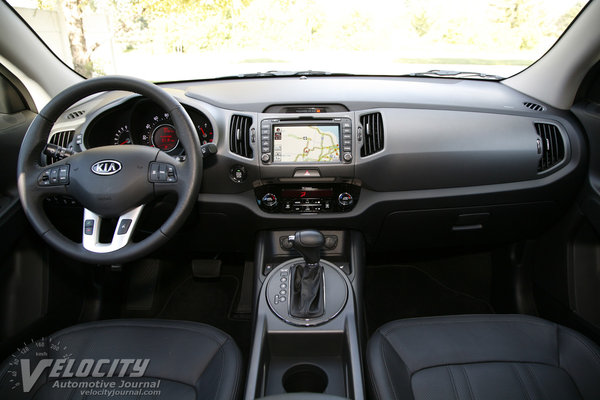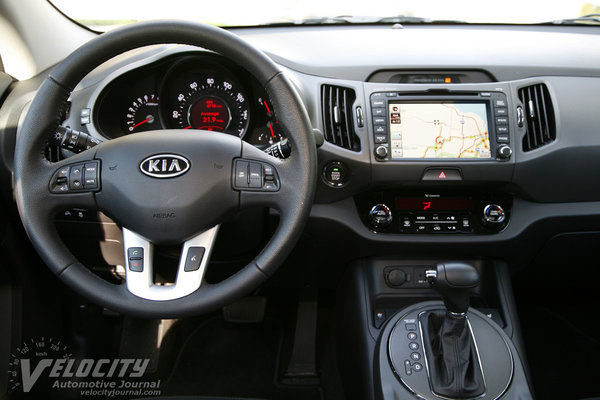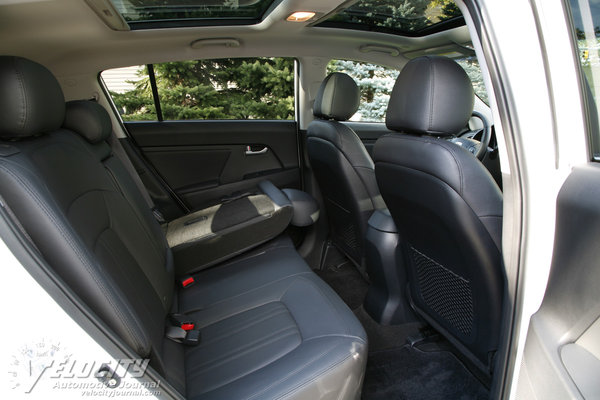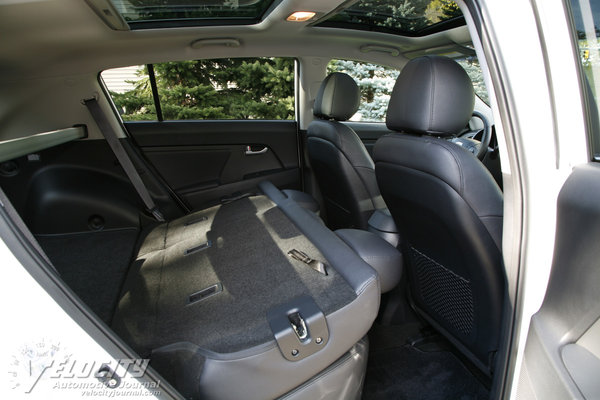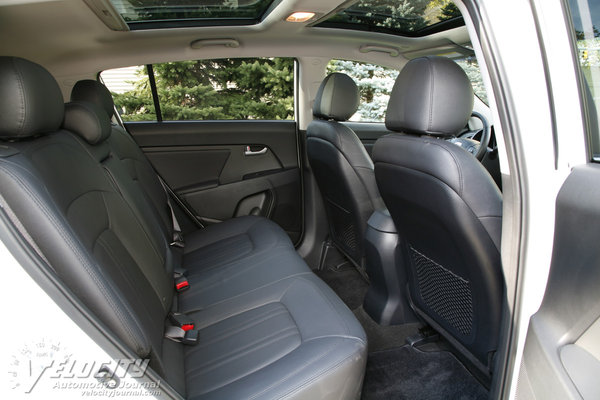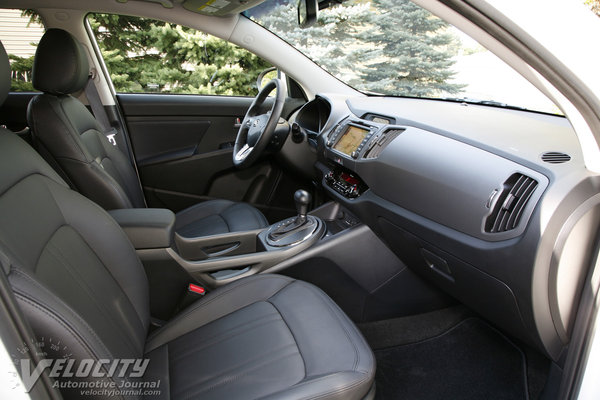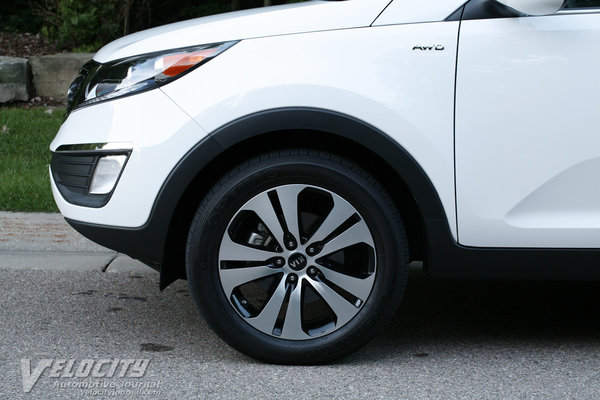2012 Kia Sportage EX AWD
11/23/2012
Shahed Hussain
Kia has been selling the Sportage in the US since the mid-1990s. Starting out as a Korean alternative to the tiny Suzuki Samurai, the Sportage has successfully shed its unrefined origins to take on established compact SUVs from American and Japanese automakers. The Kia shares its platform with the Hyundai Tucson, but the Sportage is clothed in radically different styling from its corporate sibling.
The Sportage lineup consists of four models: Base, LX, EX and SX models. Most Sportage models are equipped with a 176-bhp 2.4L inline-4, but Kia reserves a 260-bhp 2.0L turbo for the Sportage SX. A 6-speed automatic is the sole transmission for all trim levels except for the base Sportage, which gets a 6-speed manual gearbox. Sportage LX, EX and SX models can be ordered with optional all-wheel drive. Pricing starts at $18,500 for the entry-level Sportage and ranges up $28,400 for the SX AWD. Our test vehicle was a 2012 Sportage EX AWD with a list price of $25,400. Options included the navigation package ($1,000), EX Premium Package ($2,900) and Cargo Net ($50) for a total sticker price of $30,150 including the $800 freight and handling charge. Kia's strategy has been to offer a lengthy list of standard equipment at an attractive price, but the Sportage EX is no longer the least expensive entry among compact crossovers. The Ford Escape, Honda CR-V, Hyundai Tucson and Chevrolet Equinox are all priced competitively with the Sportage, rendering the Kia just another entry among affordable compact SUVs.
Inside the Sportage, Kia chose various gray hues for the dashboard, seats, and door panels. The monotonous gray is relieved somewhat by chrome-rimmed vents and dials. Both the dashboard and upper door panels are hard plastic, but the door armrests and other frequent touch points are nicely padded. Integrated on the steering wheel are buttons for audio, cruise, and Bluetooth phone. Primary gauges consist of a large 160-MPH speedometer flanked by an 8,000 RPM tachometer. Smaller gauges for coolant temperature and fuel level are accompanied by a multi-function LCD for the odometer, trip computer, fuel economy, and transmission mode. The white-on-black gauges and red pointers are crisply backlit at night for excellent clarity. Both the navigation and audio system are accessed via a dash-mounted touchscreen display; Kia wisely opted for buttons and knobs for frequently used settings. The Sportage has the expected dual cupholders in the center console, along with additional beverage holders in the front door pockets and the rear armrest. Between the front seats is a storage bin with a USB port and iPod cable. A convenient slot within the bin holds the key fob; an urgent beeping tone reminded us not to leave the key inside.
Sportage EX and SX models get a standard leather-wrapped steering wheel and shift knob, although the leather on the steering wheel is indistinguishable from plastic. The leather-covered front seats provide adequate comfort but the flat bolsters are not especially supportive. Seat heaters for both front seats are standard, but the driver's seat also is also ventilated. Rear passengers benefit from ample legroom and accommodations for two occupants, although a third person can ride along in reasonable comfort. The optional dual-panel moonroof, included with EX Premium Package, cuts into headroom for those taller than about 5'-10". Fold down the rear seats to increase cargo capacity from 26.1 cu. ft. to 54.6 cu. ft. Under the cargo floor is a shallow storage compartment and the spare tire.
Kia's 2.4L inline-4 is rated at 176-bhp @ 6,000 RPM and 168 lb.-ft. @ 4,000 RPM. A 6-speed automatic delivers powers to the front wheels, or all four wheels with the optional Dynamax(R) AWD on our test vehicle. The 4-cylinder and automatic combination accelerates adequately around town, but highway merging usually requires full throttle, even when lightly loaded. The extra mass of the AWD system raises curb weight from 3,186 to 3,355 lbs, and is partly responsible for the Kia's lackluster midrange acceleration. The big inline-4 is not especially refined in the upper reaches of the rev range, although the racket from the engine bay is not accompanied by excessive vibration. During moderate acceleration and steady-state cruising, the 2.4L remains unobtrusive. In all fairness, large-displacement fours are prone to unpleasant noise and vibration, but most Japanese and American brands have conquered or at least managed to quell this issue.
In light of how the 2.4L struggles to motivate the Sportage EX, it's tempting to consider the 260-bhp 2.0L turbo, and its generous 269 lb.-ft. of torque. No doubt the turbo four in the Sportage SX would ensure snappy acceleration, but its fuel economy rating of 20/25 MPG (city/hwy.) sacrifices some efficiency compared to the 20/27 MPG (city/hwy.) achieved by the normally-aspirated 2.4L. For the best gas mileage, opt for a front-drive Sportage and 6-speed automatic combination for a more palatable 21/30 MPG (city/hwy.) During our test, we averaged almost 22 MPG in mixed urban and highway driving.
The Sportage's suspension layout conforms to the norm for most compact crossovers. MacPherson struts with coil springs, gas dampers, and stabilizer bar are in front. At the rear is a multi-link setup with coil springs, gas dampers, and stabilizer bar. Steering is an electrically-assisted rack-and-pinion system. Four-wheel disc brakes with ABS and Electronic Stability Control are standard. Sportage models are equipped with standard 16, 17 or 18-inch alloy wheels. Sportage EX & SX models ride on 235/55R18 Hankook all-season tires. All Sportage models are rated to tow up to 2,000 lbs.
Like many compact SUVs, the Sportage favors a comfortable ride over athletic handling. The softly sprung suspension absorbs most bumps and potholes without upsetting the chassis. Although the Sportage tracks acceptably on the highway, the Hankook tires contribute to frequent minor steering corrections. The electric power steering is calibrated for light effort at low speeds, but feels overboosted at higher speeds. Around curves, the Sportage exhibits the typical moderate body roll expected from tall crossovers. Even with the all-wheel drive diverting torque to the rear wheels, mild understeer dominates the Sportage's handling. The AWD system does eliminate any hints of torque steer, or wheelspin on dry roads. In this segment, customers expect safe and predictable handling and the Sportage delivers no surprises.
Kia has progressively updated the Sportage from its origins as a basic compact SUV into a reasonable alternative to the Escape, RAV4, or CR-V. The Sportage matches its rivals in technology and build quality, but falls a half-step behind in overall refinement. Kia has also hiked the Sportage's pricing to the same level at its better-established competitors, eroding its appeal as a value-oriented crossover. So even though the Sportage is a perfectly competent SUV, there is no compelling reason to choose the Kia over any of its domestic or Japanese competition.

